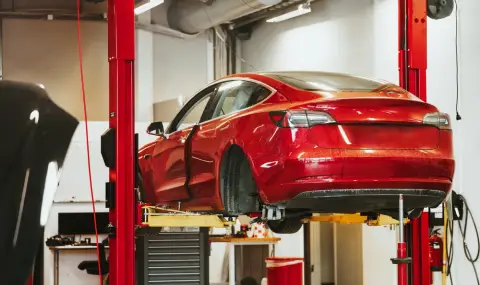The German automobile club ADAC has published its annual report on car reliability, which covers a wide range of models and specifications. One of the most unexpected and at the same time important findings of the study is that modern electric vehicles break down much less often than cars equipped with gasoline or diesel internal combustion engines. This trend reflects deeper changes in engineering, production quality and the evolution of electric vehicles.
To measure the breakdown rate, ADAC uses an indicator of the number of technical breakdowns per 1,000 vehicles. According to statistics, electric vehicles manufactured between 2020 and 2022 show an average breakdown rate of 4.2 cases per 1,000 vehicles, while for cars with internal combustion engines this figure is 10.4. This is almost 2.5 times more than the result for cars powered by electricity, which proves the gradual but confident strengthening of the positions of electric vehicles not only in the context of environmental friendliness, but also in terms of reliability.
Even more indicative are the trends over the years. In 2020, electric vehicles had 8.5 breakdowns per 1,000 units, while cars with internal combustion engines had 12.9 breakdowns per 1,000. In 2021, this figure decreased to 4.3 for electric vehicles and 8.2 for cars with internal combustion engines. The best result was observed in 2022: only 1.7 failures per 1,000 electric cars compared to 5.4 for cars with internal combustion engines. Thus, electric vehicles are not only becoming more reliable - the overall failure rate is decreasing across the industry, but the rate of improvement is higher for electric vehicles.
However, not all electric vehicles are equally reliable. The Hyundai Ioniq 5 stands out sadly, as according to the study it turned out to be the most problematic among the electric cars of 2021 and 2022. The failure rate for the 2021 models is 18.3 per 1,000 cars, and for 2022 it has increased even more to 22.4. The reasons for these results are not described in detail in the study, but it is likely that they are related to systemic problems with software or electronics.
However, the example of the Tesla Model Y shows a completely different picture. In 2022, there were only 0.9 failures per 1,000 units of this model - almost ten times less than its Korean competitor. This result indicates not only the high quality of assembly of a particular model, but also the stability of electronic systems, the consistency of all control modules and good adaptation to real operating conditions.
Another interesting example is the small budget electric car Dacia Spring. This electric car, which costs less than half the price of the Hyundai Ioniq 5, also surpasses it in reliability: 2.9 failures per 1,000 vehicles from the 2022 model year. This eloquently demonstrates that even affordable models can be more reliable than established market players if they are structurally simpler and less susceptible to complex technical failures.
At the same time, ADAC specifies that most failures in electric vehicles do not affect high-voltage components or batteries of the traction system, but the usual 12-volt battery, similar to that used in gasoline or diesel cars. This battery is responsible for powering the main electrical systems and is in many cases the main culprit for seeking technical assistance. This shows that a reduction in the number of failures does not always mean the absence of technical risks - rather their redistribution to less critical, but still important nodes.
Overall, the results of the ADAC study confirm that electric vehicles are no longer exotic, but are becoming a stable and even more reliable transport segment. At the same time, the statistics also reveal weaknesses in the new technologies that manufacturers still need to pay attention to.
